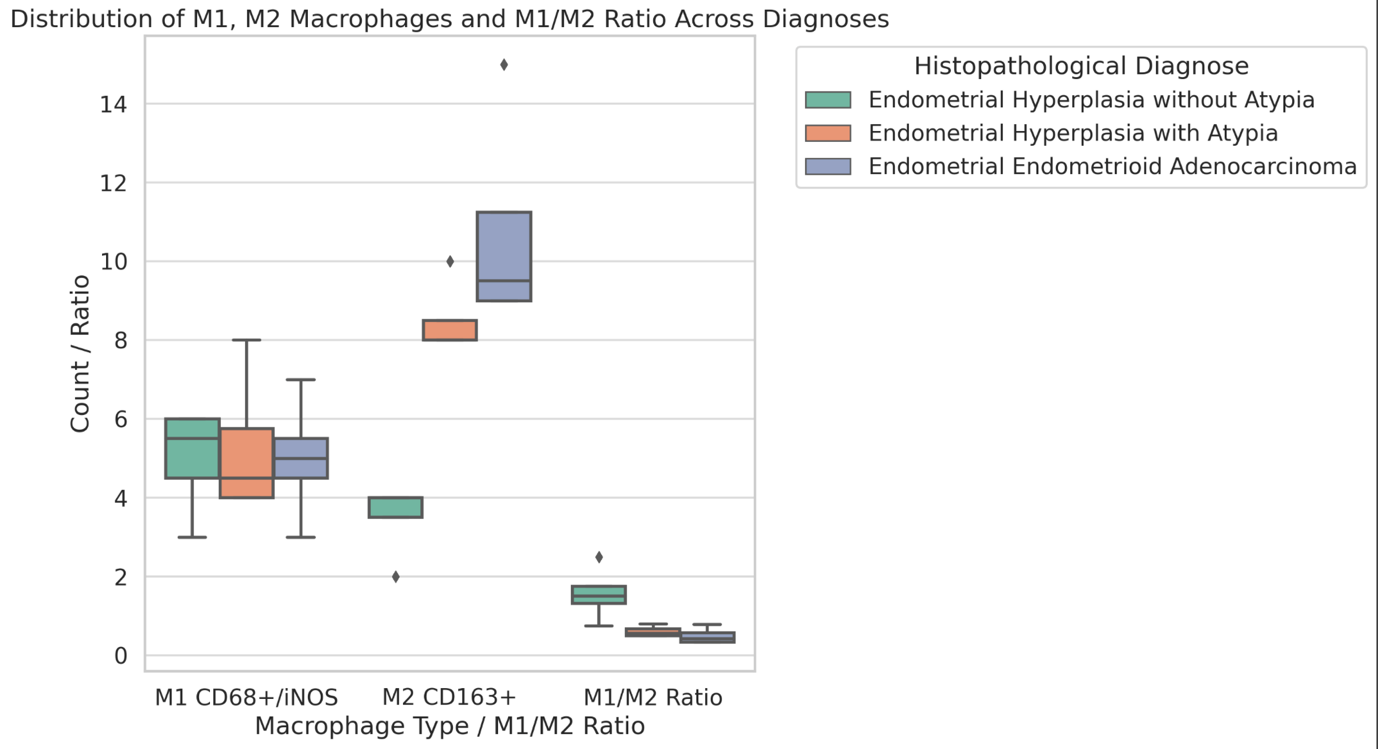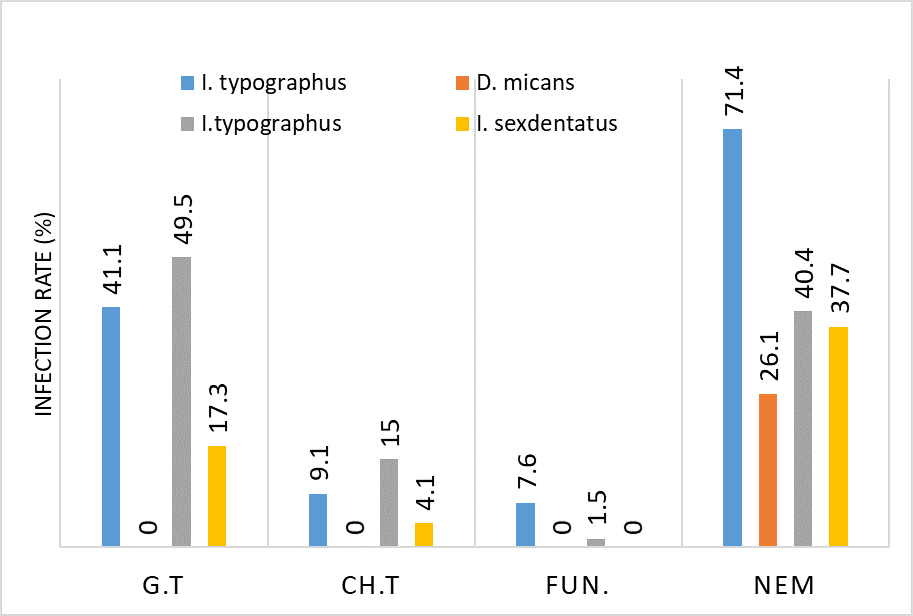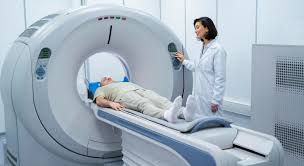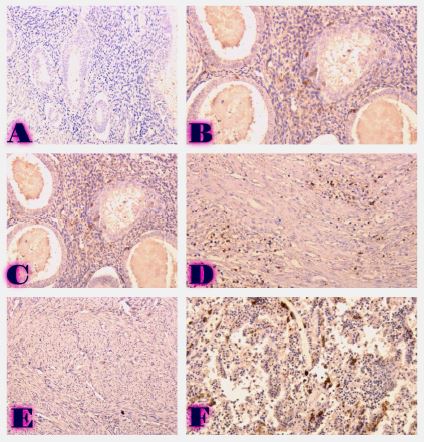Phenotypic characteristics of peritoneal tumor implants in ovarian epithelial tumors
Downloads
Tumors with borderline ovarian malignancy are characterized by heterogeneity in 80-90% of cases and are characterized by a favorable prognosis, while in 10-20% of cases peritoneal implants are formed and recurrence develops. The presence of peritoneal implants has an uncertain predictive value. According to some authors, they undergo regression and in some cases a long survival period is observed despite the presence of disseminated implants. Implants are also divided into invasive and non-invasive types. Such division may have prognostic value, which is why it is the subject of active study. Cytokines secreted by macrophages induce angiogenesis and evasion of immune surveillance by ovarian tumors, according to recent studies, the frequency of distribution of macrophages in the tubule may indicate the spread of the disease and be associated with more extensive tumor dissemination. The role of the peritoneum in the dissemination of tumor processes is a subject of active study. The development and metastasis of ovarian epithelial carcinoma is associated with fibrosis, which is one of the driving forces in the process of epithelial-mesenchymal transformation. That is why the deciphering of the regulators of epithelial-mesenchymal transformation in epithelial squamous cell carcinoma is needed for the development of new therapies to eliminate metastatic spread and, of course, to improve the survival rate of patients. Therefore, the correct identification of peritoneal implants is an important factor. Although there are histological criteria for distinguishing between invasive and noninvasive implants, their differentiation can be difficult. Furthermore, little is known about the molecular-genetic basis of implants. This issue requires additional studies to correctly determine the diagnosis, treatment method and prognosis.
Downloads
Metrics
L. A. Torre et al., “Ovarian cancer statistics, 2018.,” CA Cancer J Clin, vol. 68, no. 4, pp. 284–296, Jul. 2018, doi: 10.3322/caac.21456.
“https://www.ncdc.ge/#/pages/file/ea1784b5-d3d0-4dd9-b29f-1369f5d6bbec”.
S. J. Ramus and S. A. Gayther, “The Contribution of BRCA1 and BRCA2 to Ovarian Cancer,” Mol Oncol, vol. 3, no. 2, pp. 138–150, Apr. 2009, doi: 10.1016/j.molonc.2009.02.001.
S. Lheureux, C. Gourley, I. Vergote, and A. M. Oza, “Epithelial ovarian cancer,” The Lancet, vol. 393, no. 10177, pp. 1240–1253, Mar. 2019, doi: 10.1016/S0140-6736(18)32552-2.
P. Sadlecki, P. Antosik, D. Grzanka, M. Grabiec, and M. Walentowicz-Sadlecka, “KRAS mutation testing in borderline ovarian tumors and low-grade ovarian carcinomas with a rapid, fully integrated molecular diagnostic system,” Tumor Biology, vol. 39, no. 10, p. 101042831773398, Oct. 2017, doi: 10.1177/1010428317733984.
P. M. Webb and S. J. Jordan, “Epidemiology of epithelial ovarian cancer,” Best Pract Res Clin Obstet Gynaecol, vol. 41, pp. 3–14, May 2017, doi: 10.1016/j.bpobgyn.2016.08.006.
N. Christou et al., “Intraperitoneal Chemotherapy for Peritoneal Metastases: Technical Innovations, Preclinical and Clinical Advances and Future Perspectives.,” Biology (Basel), vol. 10, no. 3, Mar. 2021, doi: 10.3390/biology10030225.
C. Gao, J. Shi, J. Zhang, Y. Li, and Y. Zhang, “Chemerin promotes proliferation and migration of ovarian cancer cells by upregulating expression of PD-L1.,” J Zhejiang Univ Sci B, vol. 23, no. 2, pp. 164–170, Feb. 2022, doi: 10.1631/jzus.B2100392.
J. O. A. M. van Baal et al., “The histophysiology and pathophysiology of the peritoneum,” Tissue Cell, vol. 49, no. 1, pp. 95–105, Feb. 2017, doi: 10.1016/j.tice.2016.11.004.
J. Liao et al., “Ovarian cancer spheroid cells with stem cell-like properties contribute to tumor generation, metastasis and chemotherapy resistance through hypoxia-resistant metabolism.,” PLoS One, vol. 9, no. 1, p. e84941, 2014, doi: 10.1371/journal.pone.0084941.
Z. Dehghani-Ghobadi, S. Sheikh Hasani, E. Arefian, and G. Hossein, “Wnt5A and TGFβ1 Converges through YAP1 Activity and Integrin Alpha v Up-Regulation Promoting Epithelial to Mesenchymal Transition in Ovarian Cancer Cells and Mesothelial Cell Activation,” Cells, vol. 11, no. 2, p. 237, Jan. 2022, doi: 10.3390/cells11020237.
V. Azimian-Zavareh, Z. Dehghani-Ghobadi, M. Ebrahimi, K. Mirzazadeh, I. Nazarenko, and G. Hossein, “Wnt5A modulates integrin expression in a receptor-dependent manner in ovarian cancer cells,” Sci Rep, vol. 11, no. 1, p. 5885, Mar. 2021, doi: 10.1038/s41598-021-85356-6.
G. Girolimetti et al., “Mitochondrial DNA sequencing demonstrates clonality of peritoneal implants of borderline ovarian tumors,” Mol Cancer, vol. 16, no. 1, p. 47, Dec. 2017, doi: 10.1186/s12943-017-0614-y.
E. S. Lee et al., “Calretinin, CD34, and alpha-smooth muscle actin in the identification of peritoneal invasive implants of serous borderline tumors of the ovary.,” Mod Pathol, vol. 19, no. 3, pp. 364–72, Mar. 2006, doi: 10.1038/modpathol.3800539.
P. Mhawech-Fauceglia et al., “Genomic heterogeneity in peritoneal implants: A differential analysis of gene expression using nanostring Human Cancer Reference panel identifies a malignant signature.,” Gynecol Oncol, vol. 156, no. 1, pp. 6–12, Jan. 2020, doi: 10.1016/j.ygyno.2019.10.021.
A. Vaidyanathan et al., “ABCB1 (MDR1) induction defines a common resistance mechanism in paclitaxel- and olaparib-resistant ovarian cancer cells.,” Br J Cancer, vol. 115, no. 4, pp. 431–41, Aug. 2016, doi: 10.1038/bjc.2016.203.
D. Martin et al., “Assembly and activation of the Hippo signalome by FAT1 tumor suppressor.,” Nat Commun, vol. 9, no. 1, p. 2372, Jul. 2018, doi: 10.1038/s41467-018-04590-1.
Copyright (c) 2024 Georgian Scientists

This work is licensed under a Creative Commons Attribution-NonCommercial-NoDerivatives 4.0 International License.









